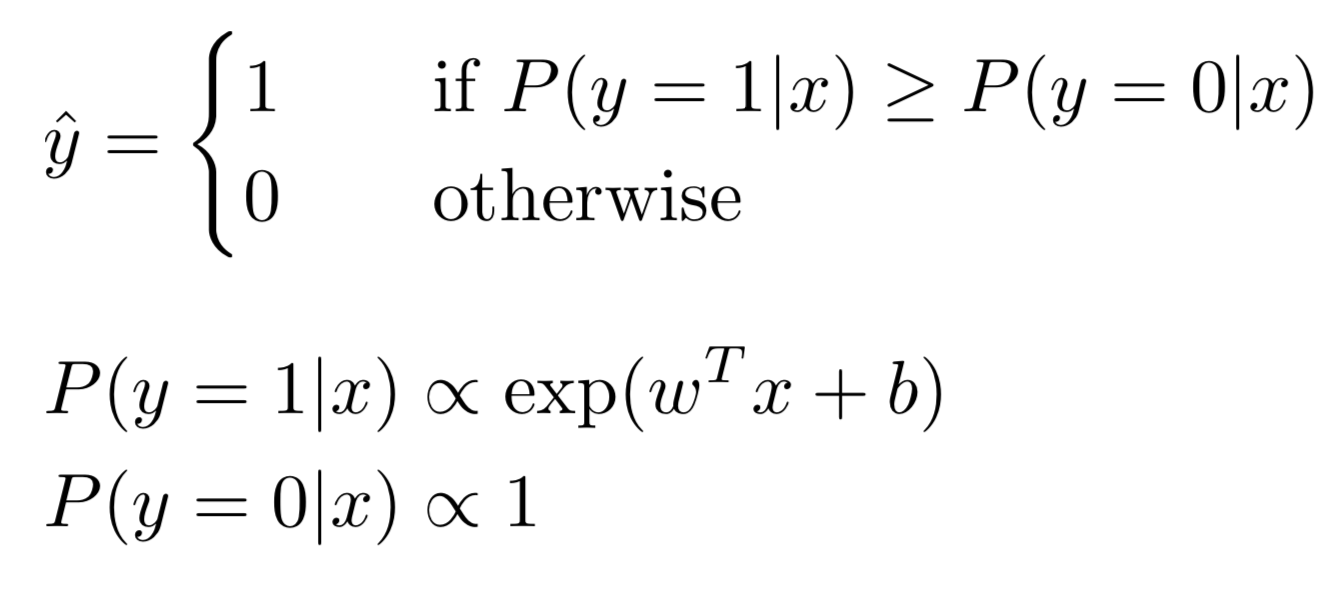Logistics Regression VS SVM
Published:
Similarities
Both logistic regression and svm is used for classification (svm can also be used for regression); and have linear seperable decision boundary (kernel can also be added in logistic regression). Logistic regression and svm are highly related, we can try to change the form to derive svm by using a logistic regression model.
For a two-class problem:

If we change the probability output of logistic regression into class, by setting a constraint on the likelihood ratio: p(y=1|x)/p(y=0|x) >=c, c>0, take log of both sides: log(p(y=1|x)) -log(p(y=0|x)) >=log(c), put the origin definition back: wTx +b >= log(c), we pick c to make log(c) =1, and put a quadratic penalty on the weights, then we can get

Differences
Let’s list the loss functions here to tell the differences between LR and svm.


Logistic regression tries to maximize the probability of data, and it works on the whole training data. LR wants to make sure the data is as much further away from the decision boundary as possible. Svm constructs a hyperplane which is obtained by maximizing the margin. This margin is defined by a small amount of data (support vectors), and these support vectors are the points closest to the decision boundary. In turn, if there are outliers in the training set, it may generate a totally wrong hyperplane. Based on above principles, let’s make comparison between LR and svm from different aspects.
Data: As svm is mainly determined by a small group of data, it will be more sensitive to outliers. As for LR, it will perform badly, if the whole dataset is strongly unbalanced. Also, compared to LR, svm is more fit for small dataset with multiple features.
Non-linear seperation: svm will tend to use kernel, as it can product the data into higher dimension and try to find a linear seperation in that space. Again, as only a few points (support vectors) will be involved, the cost won’t be too high. On the contrary, LR will avoid using kernel. Because all the dataset need to be calculated to find the decision boundary.
Overfitting: L2 regularization is kind of included in svm’s loss function, together with the parameter C, both of them can play a role in controlling the trade-off between minimizing training errors and model complexity.
Output: LR gives probability output, which is better to measure the confidence of the prediction.
Reference
[1]. http://www.mamicode.com/info-detail-517504.html
[2]. https://compbio.soe.ucsc.edu/genex/genexTR2html/node3.html


Leave a Comment